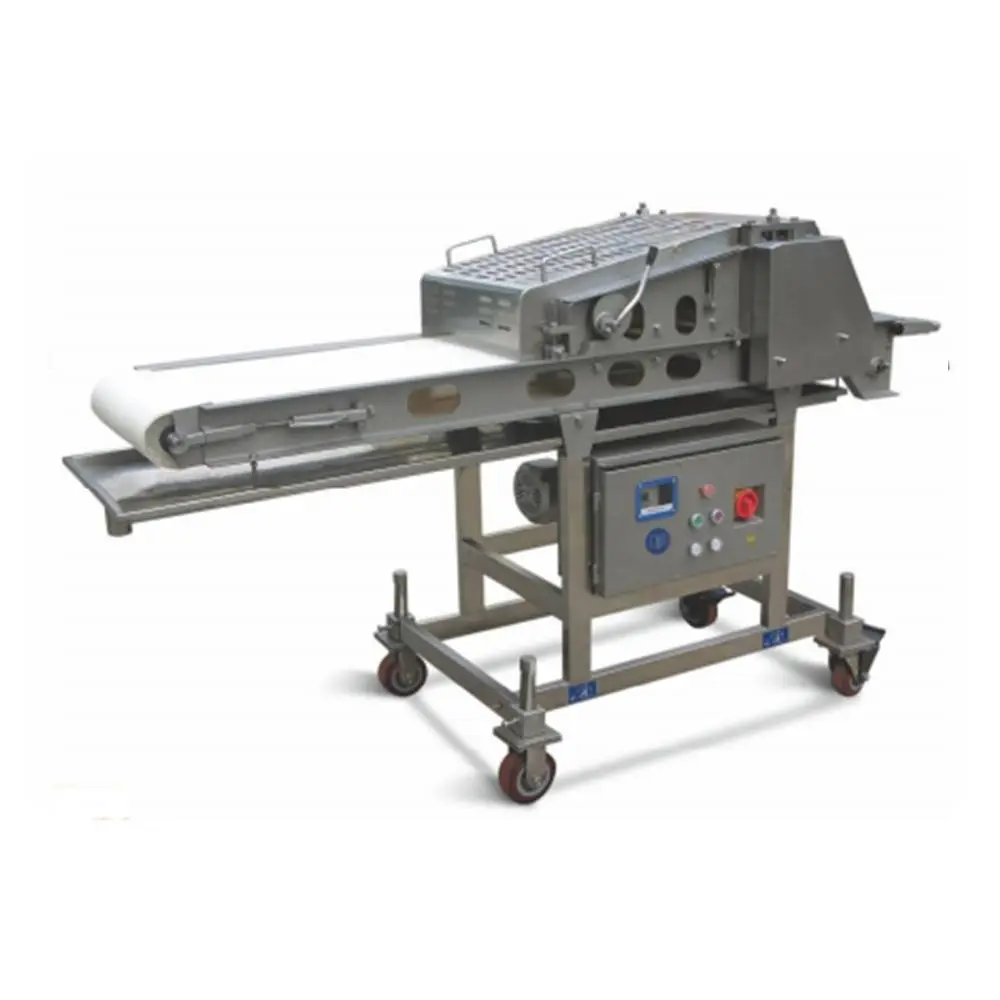
10 сар . 18, 2024 22:37 Back to list
Filling Pipes for Sausage Production in Industrial Manufacturing Facilities
Filling Pipes for Sausage Machine Factories
In the sausage manufacturing industry, the importance of maximizing efficiency and ensuring product quality cannot be overstated. One critical component that plays a significant role in achieving these goals is the filling pipe. This essential part of the sausage machine is designed to facilitate the smooth and precise filling of sausage casings with minced meat and other ingredients, ensuring consistent texture and taste. In this article, we will explore the critical functions, design considerations, maintenance, and advancements in filling pipes for sausage machine factories.
The Function of Filling Pipes
Filling pipes serve several essential functions in sausage production. Primarily, they are responsible for transferring the meat mixture from the stuffing machine to the casing. This transfer must be executed seamlessly to maintain the quality and integrity of the product. When the filling process is carried out correctly, sausages have a uniform filling distribution, which enhances their visual appeal and improves cooking consistency.
Additionally, the filling pipe must ensure minimal air inclusion during the filling process. Air pockets can lead to spoilage, inconsistent cooking, and even product wastage. A well-designed filling pipe minimizes air entrapment by allowing the meat mixture to flow smoothly, thus ensuring that each sausage is filled appropriately.
Design Considerations
When designing filling pipes for sausage machines, several factors need to be taken into account
1. Material Choice The filling pipe should be made from high-quality, food-grade materials that can withstand the demands of industrial use. Stainless steel is a popular choice due to its resistance to corrosion, ease of cleaning, and non-reactive properties with food products.
2. Diameter and Length The diameter and length of the filling pipe must match the size of the casing being used. This compatibility ensures that the filling is efficient and minimizes the chances of clogging. Pipes that are too narrow can lead to frustration and downtime, while those that are too wide may cause excessive filling and waste.
3. Shape and Design The shape of the filling pipe can affect the flow of the meat mixture. A tapered design is often preferred, as it helps channel the mixture into the casing more effectively. Moreover, incorporating features such as a tapered end or a flared design can further enhance filling efficiency.
4. Ease of Cleaning Sanitation is paramount in food processing. Filling pipes should be designed for easy disassembly and cleaning to prevent cross-contamination between batches. Smooth surfaces without crevices help in maintaining hygiene standards.
filling pipe for sausage machine factories

Maintenance Practices
Regular maintenance of filling pipes is crucial to ensure their longevity and optimal performance. Here are some recommended practices
1. Regular Inspections Routine checks can help identify wear and tear, rust, or any deformities that might affect performance. Early detection can prevent costly downtime and replacements.
2. Cleaning Protocols Establish and follow rigorous cleaning schedules to ensure that filling pipes are sanitized after every use. This practice can minimize the risk of contamination and extends the lifespan of the equipment.
3. Lubrication Moving parts associated with the filling pipes should be lubricated as recommended by manufacturers to avoid friction wear and ensure smooth operation.
4. Replacement of Worn Parts It is crucial to replace any worn or damaged parts immediately. Running operations with compromised equipment can lead to product defects and production inefficiencies.
Advancements in Technology
Recent advancements in technology have brought about improvements in the design and functionality of filling pipes. Modern filling machines may incorporate automated features that ensure precise filling measurements, reducing human error and increasing output rates. Additionally, the integration of sensors and IoT technology allows for real-time monitoring of the filling process, enabling quick adjustments and maintenance alerts.
Moreover, innovations in materials science have led to the development of more durable and lightweight filling pipes, enhancing the overall efficiency of the sausage production process.
Conclusion
Filling pipes are a crucial component in the sausage production process, playing a vital role in ensuring product quality and operational efficiency. Through careful design and regular maintenance, sausage manufacturers can optimize their filling processes, ultimately leading to higher quality products and increased profitability. As technology continues to evolve, the future of filling pipes in sausage machine factories looks promising, presenting opportunities for enhanced performance and innovation in food processing.
Latest news
-
Pneumatic Clipping Machine- Shijiazhuang Bossin Machinery|Sausage Production Line, Food Processing Machinery
NewsAug.05,2025
-
Pneumatic Clipping Machine-Shijiazhuang Bossin Machinery|Precision, Efficiency, Durability
NewsAug.05,2025
-
Pneumatic Clipping Machine-Shijiazhuang Bossin Machinery|Precision Sausage Production&Efficient Clipping Technology
NewsAug.05,2025
-
Pneumatic Clipping Machine: Sausage Production Efficiency & Advanced Tech | Shijiazhuang Bossin Machinery Equipment Co., Ltd.
NewsAug.05,2025
-
Servo Motor Sausage Cutter Spare Parts | Precision Components
NewsAug.05,2025
-
Premounted Side Disc for Efficient Operation - AI-Enhanced
NewsAug.04,2025